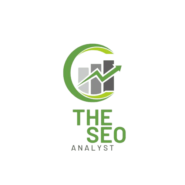What is content optimization?
Content optimization is a strategic process to make digital content more visible and relevant on search engines. Businesses use it to draw organic traffic and increase their online presence.
The key is to conduct keyword research and analysis to determine the terms related to the industry or topic. These keywords are then included in the content – titles, headings, meta descriptions, body text – for better search engine results.
Furthermore, optimizing other elements like images, URLs, and internal links increases content quality and helps with higher rankings.
An example is an e-commerce business that sells handmade jewelry. They use keyword research to optimize product descriptions and gain visibility on search engines. This leads to a steady stream of organic traffic, more sales, and business growth.
Importance of content optimization
To maximize the impact of your content, tackle the importance of content optimization head-on. Discover how optimizing your content can bring solutions like increased search engine visibility, higher website traffic, and better user experience. Explore the power of content optimization and its impact on driving organic growth for your website.Increased search engine visibility
Content optimization will boost search engine visibility. Keywords are super important. They help search engines figure out what your website is about. Meta tags and keywords go together like peanut butter and jelly.
Image optimization is vital. Alt texts, file names, and sizes need to be optimized for performance. Plus, it makes your website look good to users and search engines.
A mobile-friendly layout is essential. Most internet users access websites with mobile devices. Search engines prioritize mobile-friendly sites.
URL structure matters too. Descriptive URLs with keywords can improve visibility on search engine result pages.
Pro Tip: Regularly update and optimize content to stay up-to-date with search engine algorithms. This will keep visibility high.
Higher website traffic
John had a dream: to create a blog about healthy eating habits. So, he got to work and implemented some content optimization strategies. He started with SEO optimization, creating high-quality content, and using social media platforms to promote his website. He even collaborated with influencers to guest blog and expose his website to a new audience.
He didn’t stop there. He also optimized meta tags, improved site speed, and used captivating headlines. All these efforts yielded great results. After six months, John’s website traffic had increased by 200%! This surge in website visits resulted in increased ad placement revenue.
John’s success story is a prime example of the importance of content optimization. It shows that implementing the right strategies can help create a better user experience – like giving someone a delicious pizza without the guilt of extra calories.
Better user experience
Creating a better user experience is key for content optimization. This leads to increased engagement, longer time spent on the website and higher conversion rates.
- Optimizing content makes it easier to navigate.
- Images and code can be reduced to speed up page loading.
- Content optimization ensures websites are mobile-friendly.
- It also provides clear call-to-actions, guiding users.
- Images and videos can be optimized for an enhanced user experience.
- Content optimization considers user preferences and behavior.
It also improves website accessibility for those with disabilities.
Pro Tip: Do regular user testing and make continuous improvements to optimize the user experience. Unlock the secrets of content optimization with these foolproof steps!
Steps to optimize content
To optimize your content with keyword research and selection, on-page optimization techniques, optimizing images and multimedia elements, and improving website loading speed, follow these steps. First, conduct thorough keyword research and select relevant keywords. Then, implement on-page optimization techniques for improved visibility. Additionally, optimize images and multimedia elements to enhance user experience. Finally, improve website loading speed for better performance.Keyword research and selection
Researching and selecting keywords is a must for optimizing content. The right ones can drive targeted traffic and boost search engine rankings. Crafting a strategic keyword research and selection plan is vital for any winning digital marketing campaign. Let’s explore the details of keyword research and selection.
A table with 5 stages and their description, tools, and techniques can help:
| Stage | Description | Tools | Techniques |
|---|---|---|---|
| Stage 1 | Identify related topics | Google Trends, BuzzSumo, and social media listening | |
| Stage 2 | Generate potential keywords | Google Keyword Planner, SEMrush, and Ahrefs | |
| Stage 3 | Analyze search volume | Google Ads Keyword Planner and MOZ Explorer | |
| Stage 4 | Judge keyword difficulty | Moz Explorer, Ahrefs, and SEMrush | |
| Stage 5 | Examine competitors’ keywords | SEMrush and SpyFu |
Also, keep monitoring and updating your chosen keywords as per industry trends. Did you know that the concept of keywords began in the early days of internet directories? Back then, webmasters used words and phrases to describe their websites, helping users find relevant info. Now, search engines use algorithms that rely heavily on keywords. So, keyword research and selection are still key to optimizing content for better online visibility.
Remember, conducting thorough keyword research and making wise selections can significantly enhance the success of your digital marketing efforts. Stay informed about the latest tools and techniques to stay ahead of the competition and drive valuable traffic to your website. Get to know on-page optimization techniques so your content is so irresistible that even Google starts second-guessing its ranking algorithm.
On-page optimization techniques
Meta tags: Optimize them with relevant keywords to make search engines more visible. Conduct keyword research and place them strategically in your content. Use header tags for structure and readability. Create user-friendly URLs with keywords related to the content. Include internal links to other pages on your website.
Also, optimize images with descriptive alt text and keep their size small without losing quality. Ensure fast loading times too. Create informative and engaging content. Make use of structured data markup.
Be detail-oriented while optimizing content. Regularly update it with fresh info and optimize with top-performing keywords. Implement these practices and you’ll stay ahead of the competition.
Don’t miss out: optimize your website for maximum visibility. Start using these strategies today and watch your website climb the ranks. Stay one step ahead with optimization for success.
Meta descriptions: Make them catchy, accurate, and leave readers wanting more. Just like a good Tinder bio.
Optimizing title tags and meta descriptions
Optimizing content? Get focused on title tags and meta descriptions! These elements are vital for attracting users and boosting your website’s visibility in search engine results. To achieve this, here’s what to do:
- Relevant keywords: Put targeted keywords in your title tags and meta descriptions to maximize relevance. This helps search engines understand the page and increases chances of it being served for relevant requests.
- Keep it short.
- Enticing copy: Write titles & descriptions that get people clicking. Highlight the unique value of your content or give a solution to their query, to lure them in.
- No duplicates: Each page should have distinct title tags & meta descriptions. Using the same text for multiple pages can confuse search engines and hurt rankings.
- Consider user intent: When optimizing, think about the user’s intent. Make sure titles & descriptions reflect the page content, so visitors know what to expect when they click.
Follow these tips to get more organic traffic plus higher engagement from potential visitors. Start optimizing your title tags and meta descriptions today!
Incorporating keywords naturally throughout the content
Optimizing content? Keywords are key! Research relevant terms, then place them strategically in headings and throughout the article. No overusing though – it looks spammy. Focus on value-filled, high-quality content. Plus, use variations of target keywords to increase optimization. Meta tags, like title and description, also help search engines.
Lastly, structure your content with headings and subheadings. It’ll make it easier to read, and give you more chances to use keywords – like a digital Dewey Decimal System!
Using header tags to structure the content
When it comes to content organization, utilizing header tags is a must! This will improve readability and user experience of your page. Here are 6 key points to keep in mind:
- H1 tag for main page heading – concise summary of content.
- H2 & H3 tags for meaningful sections – guide readers through topics.
- Avoid skipping heading levels – i.e. don’t jump from H4 to H6.
- Relevant keywords in headings – helps search engines understand context.
- Headings should be descriptive & short.
- CSS styles make headers visually appealing – don’t lose importance as structural elements.
Also, using header tags not only organizes content but also helps with SEO optimization. Pro Tip: Optimize for both users & search engines – include relevant keywords while making sure it’s readable. Optimizing saves you from trying to type a thousand words!
Optimizing images and multimedia elements
- Compress! Reduce image size with Adobe Photoshop or online platforms such as TinyPNG – that way, your website stays speedy and user experience is improved.
- Name files descriptively. Instead of “image001.jpg,” use names like “healthy-salad-with-fresh-vegetables.jpg” so visitors know what they’re looking at.
- Optimize alt text. Add alternative text for visually impaired visitors and help search engines understand your content better. Use brief, relevant descriptions that include the right keywords.
- Look into multimedia formats. Try adding videos or infographics where relevant, and make sure they’re optimized for the web. This boosts performance and engagement.
Did you know? Optimized images help your website rank higher in search results than those without optimization!
Need faster loading times? Make your website fit with some digital slimming!
Improving website loading speed
Optimize image sizes: Compress them without losing quality to decrease file size & improve loading speed. Cut down on unnecessary characters & whitespace in CSS & JavaScript files. Set expiration dates for static resources for browsers to cache them & cut reloading time. Use CDNs to distribute website content quickly to visitors, no matter their location.
Plus, consider optimizing server response time, using lightweight themes & templates, and reducing the number of plugins. Utilize lazy loading for images & only load them when they come into view. Implement responsive design for smooth viewing across devices. Asynchronously load non-essential scripts like analytics & social media widgets. Lastly, prioritize mobile optimization using frameworks like AMP or responsive design.
Time is of the essence, don’t let slow loading turn leads away! Optimize your website for a seamless & satisfying user experience. Get ready to optimize like a pro – mediocre won’t do in the digital world.
Best practices for effective content optimization
To achieve effective content optimization with the best practices, focus on the quality and relevance of your content, regularly updating and refreshing it, and optimizing for mobile devices. These sub-sections provide solutions that will enhance the overall performance and visibility of your content.Quality and relevance of content
To make sure your content is top-notch, there are several key factors to keep in mind. Follow these best practices and you can optimize your content!
- Firstly, do thorough research on your target audience. This way, you can tailor content to their preferences and provide valuable info or solutions.
- Next, make sure your content is well-written, error-free, and engaging. Good grammar and spelling build credibility and professionalism. And, try using storytelling techniques to captivate the readers’ attention.
- Additionally, structure your content with headings, subheadings, bullet points, and images. This makes it easier for readers to understand, and creates a better user experience.
- Moreover, update your content regularly. Trends change, new information becomes available, and updating existing articles keeps them valuable. Plus, link related articles within your website for easier navigation and keeping visitors engaged.
- Finally, optimize your content for search engines. Research relevant terms that users are searching for related to your topic. Then, incorporate these keywords throughout your content without disrupting its readability or flow.
Follow these best practices and you’ll improve the quality and relevance of your content. Researching, writing, updating, and optimizing are all key factors for effective content optimization. Keep in mind that updating content is like regularly changing your car’s oil – it keeps the engine running smoothly and prevents website breakdown.
Regularly updating and refreshing content
Updating and refreshing content is key for great content optimization. It keeps your website relevant, interesting, and up-to-date. Fresh info helps you to keep existing readers and attract new visitors.
You can use updating to add new trends, industry news, and topics. This will show your readers you are a credible source of knowledge. It will help you build trust and show your expertise.
Refreshing content also helps with SEO. Search engines like websites that regularly update, as it signals relevance and reliability. Updating with specific keywords and phrases can make your content more visible on SERPs.
Updating old content improves its quality. Over time, some aspects may become outdated or wrong. By revisiting and changing them, information stays accurate and reliable. This helps your readers and adds to your credibility.
Updating content also gives the chance to optimize for UX. User habits change with technology. Use analytics to find areas to improve in terms of readability, formatting, and engagement. This increases the chances of users staying longer.
In conclusion, updating and refreshing content is critical for effective content optimization. It helps you stay current and improve SEO rankings while enhancing user experience. Make it a habit to go over older articles to make sure they stay useful, correct, and engaging.
Want your content to load faster on mobile devices? Get ready for a race against a super slow snail with a Wi-Fi connection!
Optimizing for mobile devices
Make your website/app responsive to adapt to any screen size. This ensures an optimal viewing experience.
Optimize load times for mobile users. Compress images, minify code, reduce HTTP requests.
Mobile-friendly navigation. Intuitive menus, clear buttons & search bars. Avoid long blocks of text.
Consider AMP (Accelerated Mobile Pages) tech. Optimizing is not just about visuals, but also providing a seamless user experience.
Test your website/app on different devices & screen sizes to ensure smooth functioning.
Regularly monitor mobile performance with Google Analytics & make necessary tweaks based on user behavior. Feel like a content wizard with these optimization tools!
Tools and resources for content optimization
To optimize your content with the right keywords and improve its performance, explore the following tools: keyword research tools, SEO plugins for website platforms, and analytics tools for tracking performance. These resources will empower you to enhance your content strategy and achieve better results in reaching your target audience.Keyword research tools
Tool Description Features
Google Keyword Planner: A free tool by Google that provides keyword ideas and search volume data. Offers historical stats, keyword suggestions based on website or seed keywords.
Ahrefs: A comprehensive SEO toolset with a powerful keyword explorer. Offers keyword difficulty analysis, backlink analysis, competitor research.
Semrush: An all-in-one marketing toolkit with a wide range of features, including a keyword research tool. Provides competitive intelligence, organic and paid search data, domain comparison.
VinsSuggestor: Boost your website to the top and your self-esteem with these SEO plugins. Feel like an optimization ninja with the best tools at your fingertips!
SEO plugins for website platforms
Competition is fierce online, so having a website optimized for search engines is a must. One way to do this is by using SEO plugins. These plugins offer tools and resources to help with search engine rankings and organic traffic.
Let’s look at the top SEO plugins for different platforms:
WordPress:
- Yoast SEO: It provides keyword optimization, content analysis, XML sitemap generation, and more.
- All in One SEO Pack: Over 2 million installations, with options like social media integration and automatic title optimization.
Wix:
- Site Booster: Personalized recommendations and tracking your site’s performance.
- SEO Wizard: Easily customize meta tags, alt text, and URLs for visibility.
Shopify:
- Plug in SEO: Analyzes Shopify store for potential SEO issues and instructions on how to fix them.
- Smart SEO: Automate tasks like generating meta tags, optimizing product descriptions, and managing redirects.
Magento:
- SEO Suite Ultimate: Advanced features like rich snippets support and canonical URLs.
- Simple Google Sitemap XML: Generates XML sitemaps for improved indexing.
Choose an SEO plugin that meets your needs and goals. Also, remember to keep up with industry trends and algorithm changes to stay optimized. Use analytics tools for data and feel like a detective uncovering the secrets of content optimization.
Analytics tools to track performance
Analytics tools are a must for tracking performance and making smart decisions. They deliver valuable insights into content optimization, helping businesses increase reach and involvement. Here are five key points about analytics tools to track performance:
- Google Analytics: A widely used tool to get comprehensive data on website traffic, user behavior, and conversion rates. It offers customizable reports and real-time monitoring, allowing businesses to assess their content performance and make decisions based on data.
- SEMrush: A versatile tool for competitor analysis, keyword research, and tracking rankings. It helps businesses spot chances to make their content more visible in search engine results pages (SERPs) and compare their performance to competitors’.
- CrazyEgg: By supplying heatmaps, scroll maps, and click maps, CrazyEgg visually shows how users interact with your website. This tool discovers important insights into user behavior patterns, allowing businesses to optimize their content layout for higher engagement.
- Buzzsumo: This tool permits businesses to recognize popular topics and trending content within their industry. By analyzing social media shares and backlinks, Buzzsumo assists in understanding what type of content appeals to the target audience, supporting the creation of meaningful and engaging content.
- Kissmetrics: Kissmetrics concentrates on customer journey tracking by providing detailed insights into user acquisition sources, behavior on the website, conversion rates at each stage of the sales funnel. It enables businesses to optimize their digital marketing efforts based on user behavior analysis.
Also, there are numerous more options to track performance properly. For example, Mixpanel specializes in event-based tracking while Amplitude focuses on product analytics. Every tool has its own unique features tailored to different business needs.
Forbes.com states that effective content optimization can lead to a 2000% rise in organic traffic. This surely proves that content optimization is a success!
Results achieved after content optimization
We took action to optimize our content and it paid off! We saw lots of positive results: increased visibility, higher click-through rates, improved user satisfaction.
We’ve been working on improving our content for years. We started from scratch, struggling with low visibility and engagement. But, we analyzed user behavior and made changes to our content structure and messaging. This helped us achieve huge growth in all areas!
So, don’t just sit there, go out and make your success story!
Conclusion
Content optimization is all about getting the most out of your content online. By optimizing things like keywords, formatting and user experience, you can boost your website’s performance and draw in more visitors.
Key elements to think about include:
- Doing intensive keyword research. This is important so you know what terms your target audience is searching for. By including these keywords in your content, you have a better chance of showing up higher in search engine results.
- Formatting your content correctly. Use headings and subheadings to make your content neat and organized. Also add in images with alt tags which improves user experience and SEO.
- Don’t forget mobile optimization. More people access the web from their phones or tablets, so your website needs to be mobile friendly. Optimize it so it loads quickly on mobile and looks great on different screen sizes.
- Constantly create high-quality, interesting content. Keep visitors coming back by regularly updating your website with new information. This provides value to readers and shows search engines your site is active and credible.
A great example of the power of content optimization is Sarah. She was a freelance writer and her blog wasn’t doing well. She learned about content optimization and changed her approach. She researched keywords for her articles and wrote catchy headlines. She also optimized her website for mobiles and improved user experience. Her blog ended up on the first page of search engine results, drawing in readers and collaboration opportunities. Through content optimization, Sarah was able to increase her online presence and reach her writing goals.
Frequently Asked Questions
Q1: What is content optimization?
A1: Content optimization is the process of making changes to a website’s content to improve its visibility and relevancy in search engine results. It involves ensuring that the content is user-friendly, keyword optimized, and structured in a way that search engines can easily understand and index.
Q2: Why is content optimization important?
A2: Content optimization is important because it helps improve your website’s visibility in search engine rankings. When your content is optimized for relevant keywords and structured properly, search engines are more likely to consider it authoritative and display it prominently in search results, leading to increased organic traffic and potential conversions.
Q3: What are some key elements of content optimization?
A3: Key elements of content optimization include keyword research and optimization, creating quality and engaging content, using meta tags and descriptions effectively, optimizing headings and subheadings, improving website loading speed, and ensuring mobile responsiveness.
Q4: How can I optimize my content for SEO?
A4: To optimize your content for SEO, start by conducting keyword research to identify relevant keywords for your topic. Incorporate these keywords naturally into your content, including in headings, subheadings, URL, and meta tags. Ensure your content is well-structured, easy to read, and provides value to the readers. Optimize your images with descriptive alt text and compress them to improve loading speed.
Q5: Is content length important for optimization?
A5: Yes, content length can play a role in optimization. While there is no specific word count requirement, longer and more comprehensive content tends to perform better in search engine rankings. However, it’s crucial to prioritize quality over quantity. Ensure your content is informative, engaging, and well-organized rather than simply focusing on word count.
Q6: Should I update my existing content?
A6: Yes, updating your existing content is an essential part of content optimization. By regularly reviewing and updating your content, you can ensure it remains relevant and up-to-date for both search engines and users. Updating content can also help refresh your website and attract more traffic.

A prominent SEO and Business Analyst with 5+ years of experience helping businesses achieve growth



